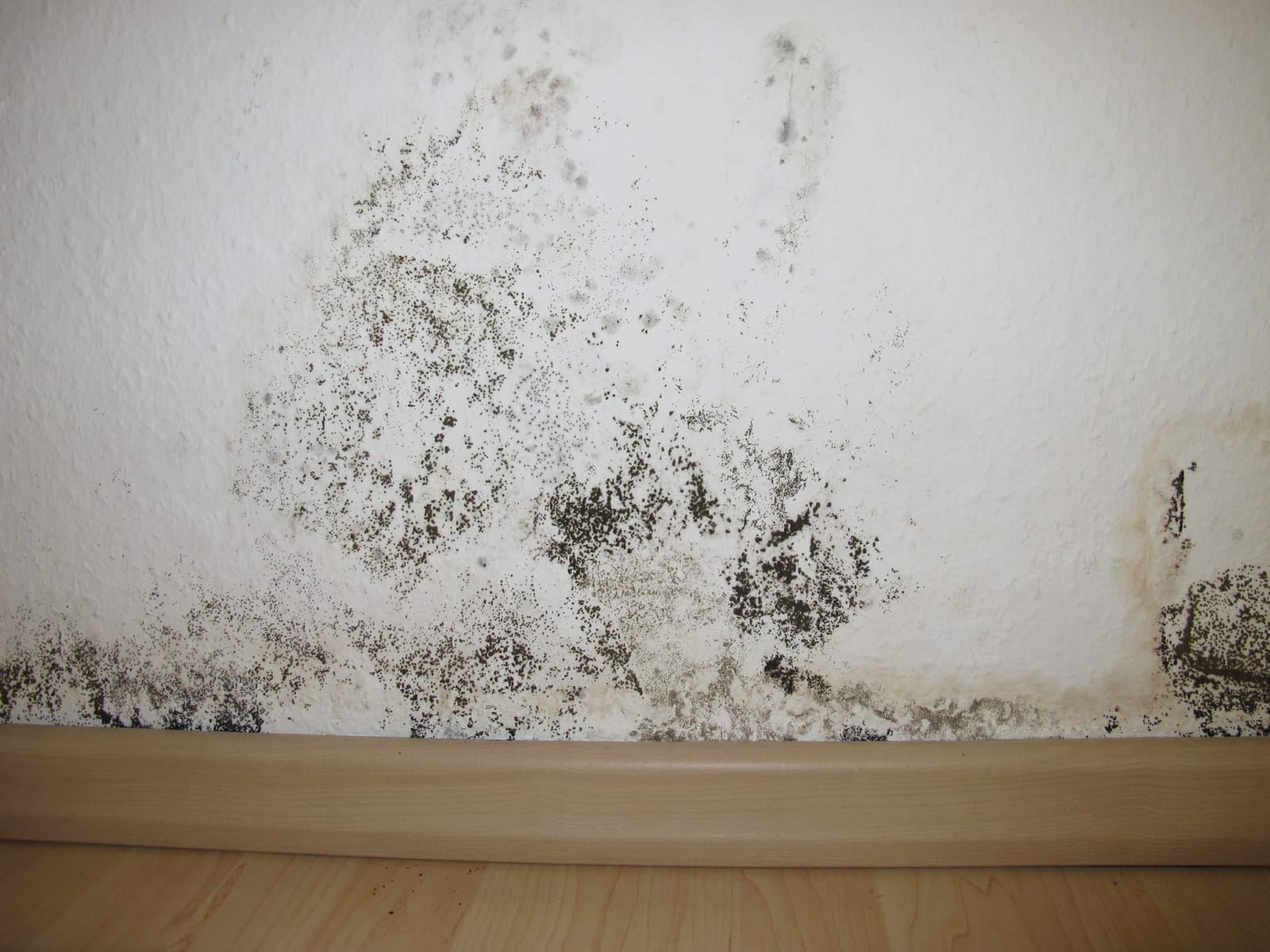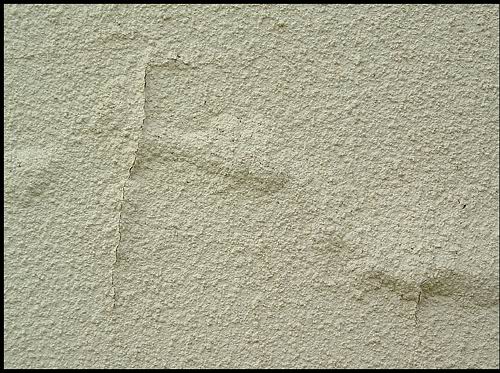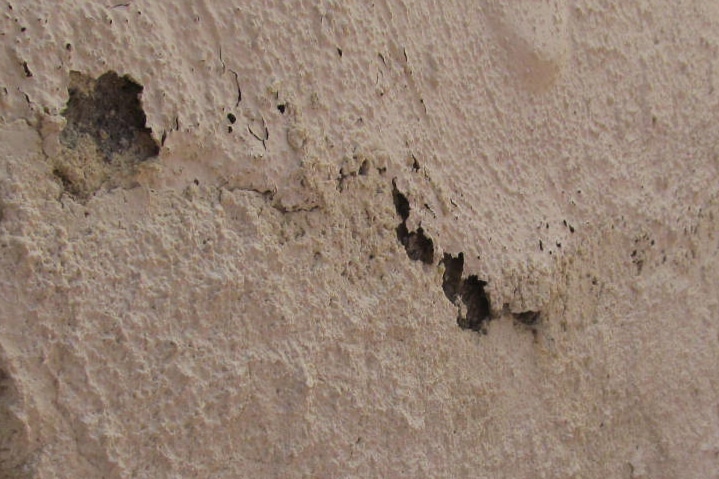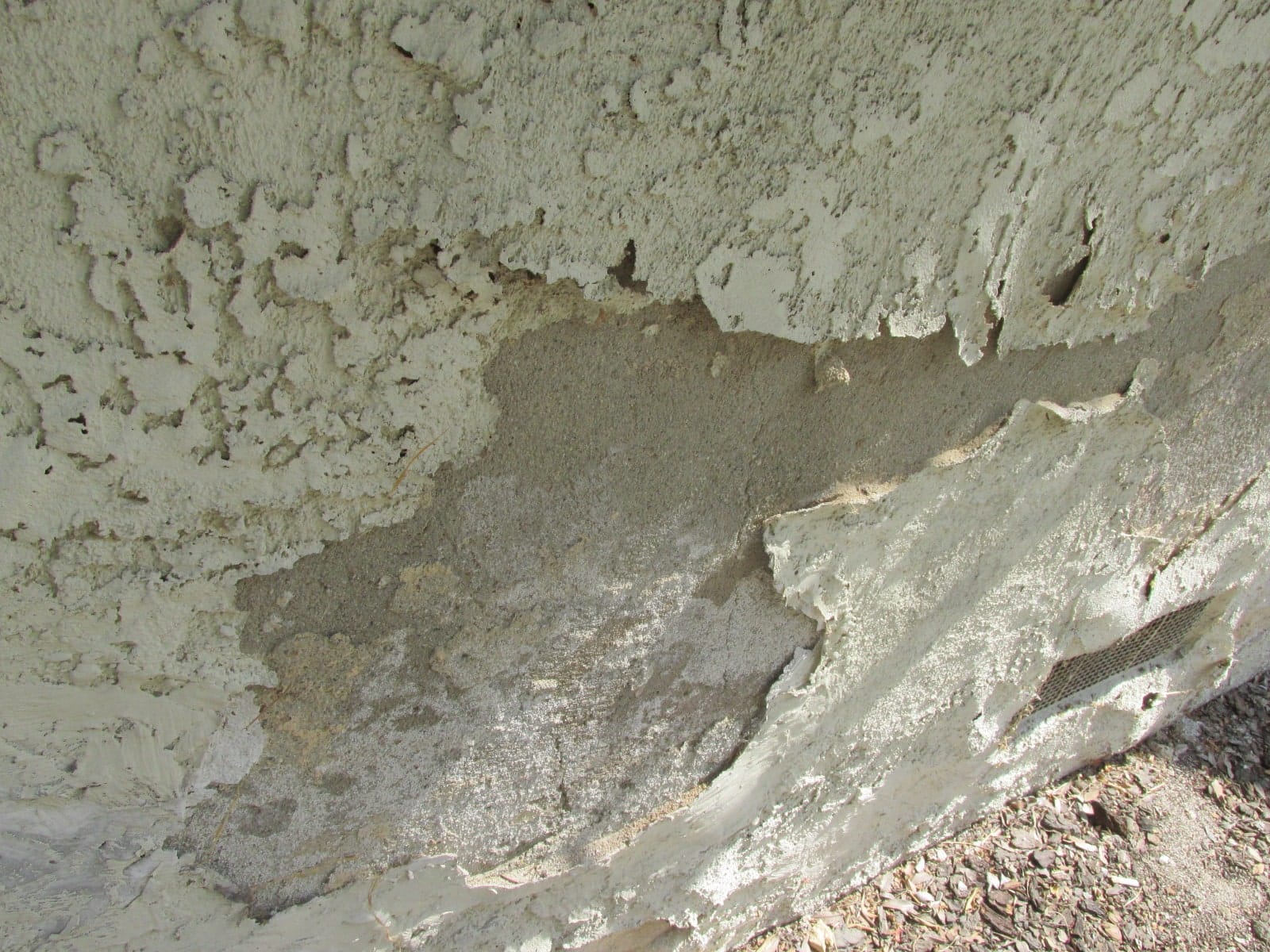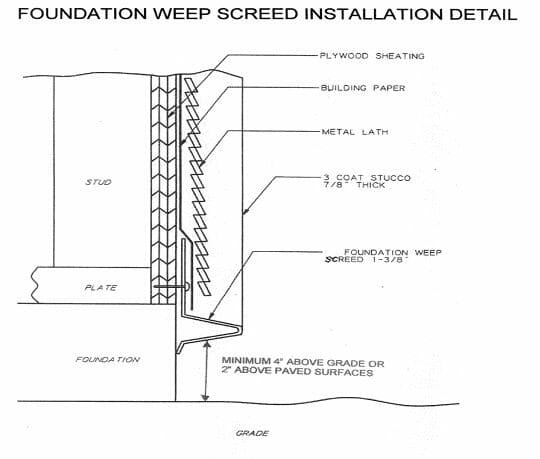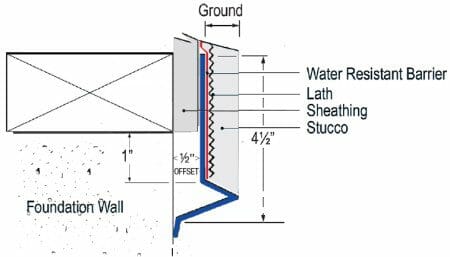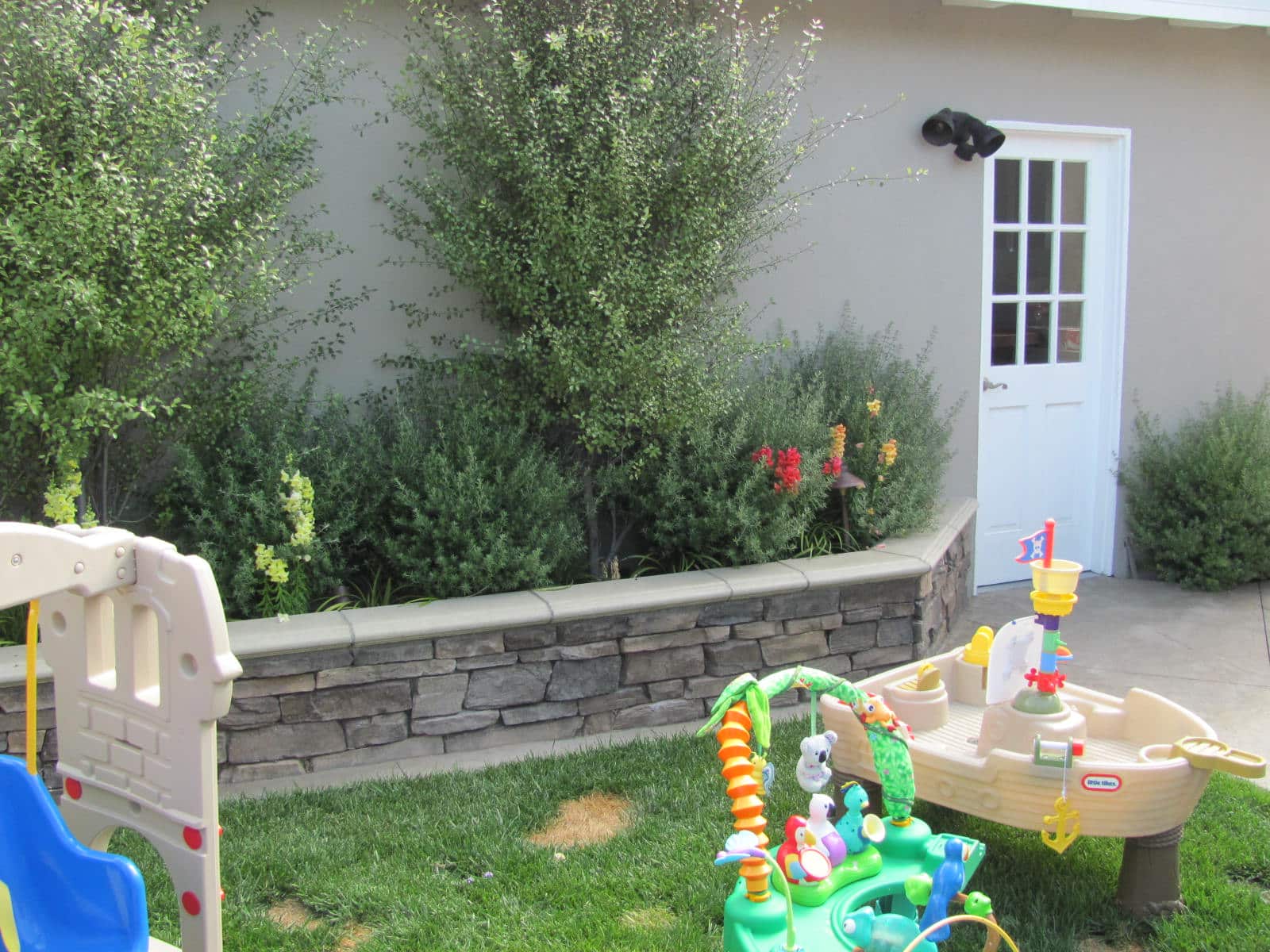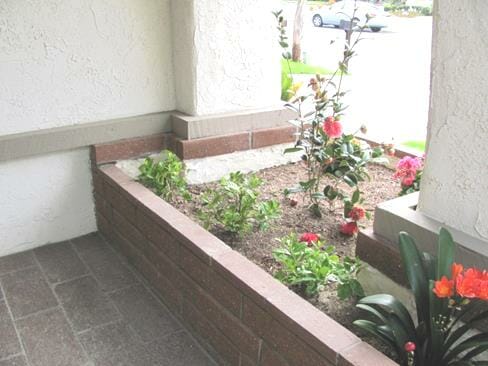Weep Screed Blocked: Check For Stains and Mold


CJ
Lead Editor
CJ is the Lead Editor at BuyersAsk, ensuring all content meets our high standards for accuracy and clarity. With a background in real estate and renovation, CJ helps homeowners navigate complex buying decisions.
View Full Profile →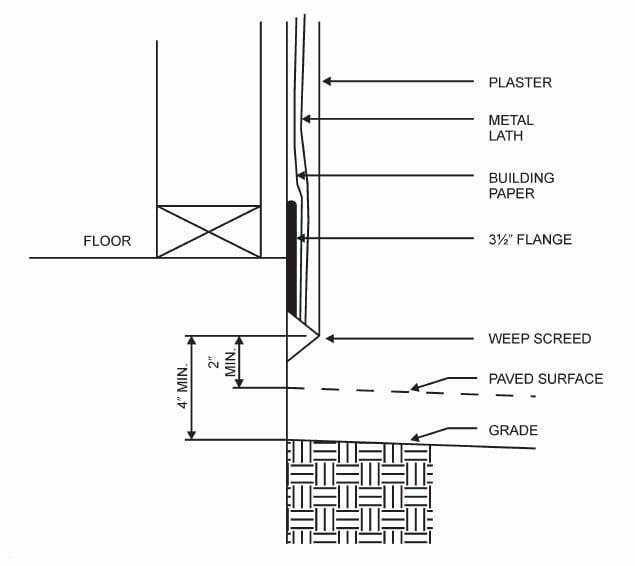
Blocked weep screed is noted in many home inspection reports and can occasionally be serious if water gets trapped
Blocked weep screed is noted in many home inspection reports for homes with a stucco exterior and it can be serious if water gets trapped or mold develops; also, wood rot and structural damage may occur. Depending on the cause and the amount of damage, correction and repair may be costly, especially if the problem is not caught early on. It is estimated that over 80% of stucco homes have one or more of the following four issues:
- The homes stucco walls do not have weep screed
- The home has weep screed, but it is blocked
- The weep screed is installed improperly
- It has weep screed that does not conform to the building codes
What is weep screed?
Weep screed is a formed piece of No. 26 gauge galvanized sheet metal, corrosion-resistant, or it may be aluminum or plastic and is generally installed near the foundation of a home. It has several purposes, including:
-
Allows excess moisture to escape or drain from the area behind the stucco membrane.
-
Holds the stucco in place where it stops at the bottom of the stucco wall. The holes or slots in the weep screed helps hold the stucco in place when the stucco is being first applied and helps prevent the stucco from rolling out along the sloped edge of the weep screed.
-
It provides a straight-line and stopping point for the base of the stucco wall.
-
And in a few instances, it may act as a capillary stop, reducing the migration of moisture upward.
-
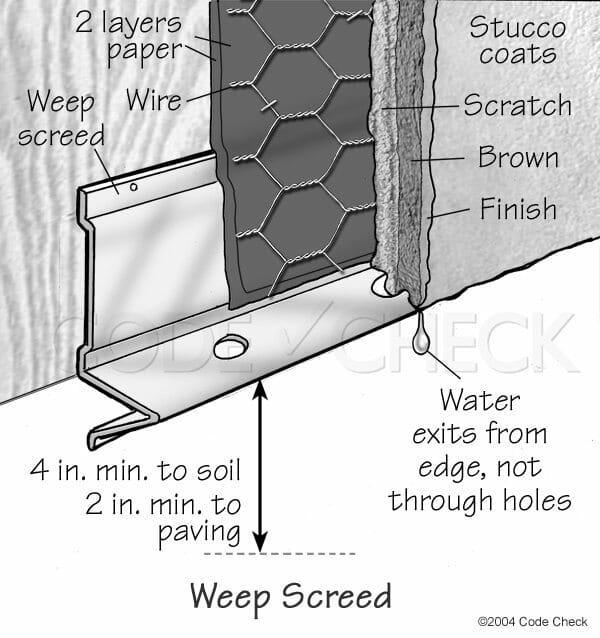
-

6 Warning signs of blocked weep screed
There are a number of warning signs that a homes’ weep screed may be blocked or that there is no weep screed at all, some of which may be an indication of other stucco problems, including poor workmanship, wrong stucco mix or portions, improper curing, etc.
#1 Stucco wall damp for extended lengths of time
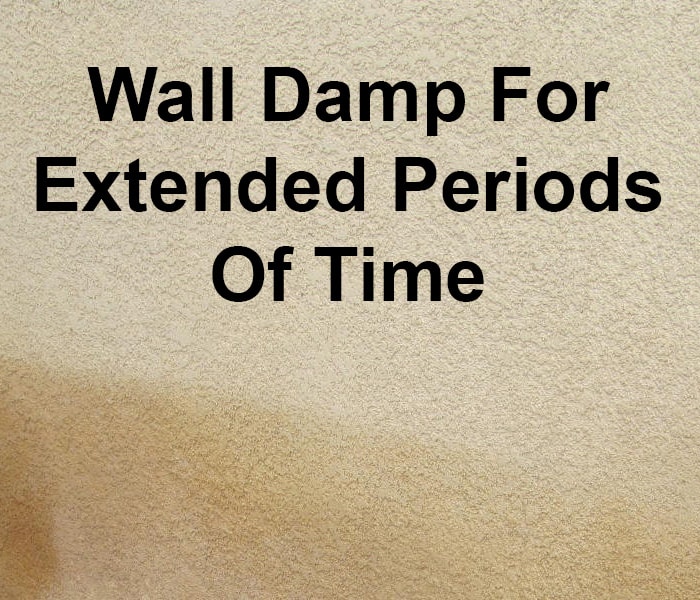
If a stucco wall stays damp for extended periods of time there is a possibility that there is moisture trapped in the wall because there is no way for it to get out, i.e., through weep screed at the bottom of the wall.
Excessive dampness may occur for a number of reasons, and if there is dampness, it is generally most prevalent in the bottom 1/3 or 1/4 of the wall and may only be in areas where the stucco weep screed is blocked or covered, but not in areas where there is a functioning weep screed that is not blocked and is installed properly.
#2 Efflorescence may be a sign of blocked weep screed
As water migrates from a stucco walls’ interior side to the exterior of the wall, it is not uncommon for efflorescence to appear on the exterior side of the wall. Efflorescence is a crystalline like substance, resulting from dissolved salts that have migrated through the stucco.
Once the solution has reached the exterior, the moisture evaporates, leaving behind a powdery, usually white in color, substance called efflorescence. This is not uncommon with stucco walls, as well as with concrete walls and slabs. (Read more about efflorescence.)
#3 Mold on the exterior or interior of a home and musty odors
Dark discoloration or stains. Should there be a dark type of discoloration, usually near the bottom area of an exterior wall, but not always at the bottom area: then it may be an indication of mold and mildew. When moisture gets trapped in a wall due to blocked weep screed, some of the moisture may enter the wall cavity itself. Thus, there is not only mold on the exterior, but it may also be present on the interior of the wall and even in the insulation. (Read about getting rid of mold)
Check the interior walls for stains, discoloration, or a musty odors. In exterior areas where the stucco weep screed is blocked or has mold and mildew evidence; check the homes interior walls opposite these areas for evidence of mold and mildew. Also check for musty odors, for they can be an indication of hidden mold and mildew.
#4 Deterioration of the stucco, flaking, bubbles or blisters
In general, stucco holds up well to moisture, but if there is a moisture problem with the stucco, it is common for there to be deterioration, flaking, bubbles or blisters. Additionally, the mixing of the ingredients of the stucco and the proportions of the materials in the stucco mix is critical. If the mixing of the stucco materials is flawed or the proportions are wrong, the life expectancy of the stucco will diminish, and deterioration will take place.
#5 Paint peeling or top coat flaking off
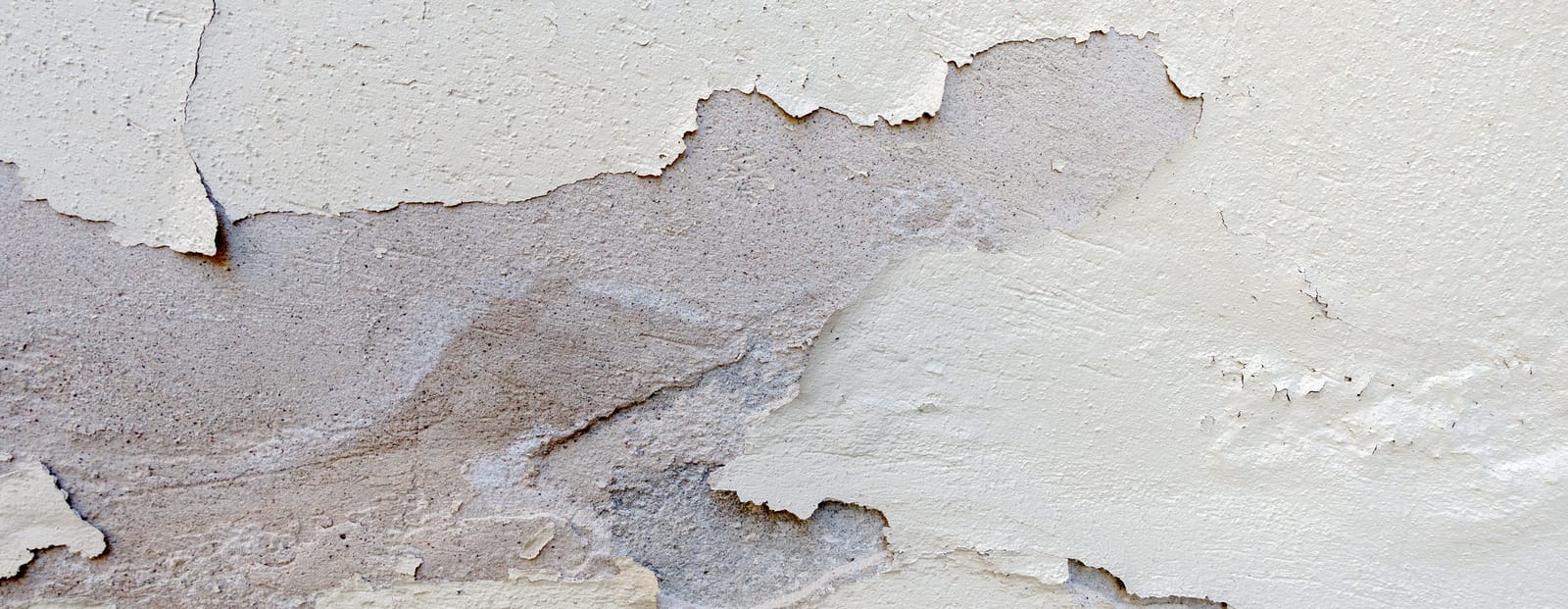
If the stucco is painted and the paint is peeling or blistering, then this is another sign that the weep screed may be blocked. Likewise, if the stuccos’ topcoat or finish coat is flaking or peeling off, then it may also indicate that there is blocked weep screed issues.
#6 Cracks in the stucco
Cracks in a stucco wall often allows moisture intrusion into the wall. If the weep screed is blocked or restricted, then the moisture may buildup, causing wood to swell or rot, which then may cause bigger cracks and more moisture intrusion. It can become a vicious cycle that would not have occurred if the weep screed was not blocked.
What happens if your weep screed is blocked?
The biggest concern with blocked weep screed is that water gets trapped in the wall behind the stucco. Water that originally got into the wall from cracks in the stucco, gaps around penetrations in the wall that are not sealed, leaks around windows and doors, and flashings that were installed improperly or deteriorated. The source of the water is often from rain, storms, melting snow and ice, or yard and planter sprinkler systems spraying the stucco wall.
When moisture is trapped inside a wall, what happens?
- Wood rot may develop causing damage to studs, headers and other framing members.
- Plywood or OSB (Oriented Strand Board) used for wall shear panels or a substrate for the stucco, may deteriorate or rot from the moisture.
- Insulation in the wall may become soaked or wet.
- Interior wall coverings such as drywall my get wet or damaged.
- Mold and mildew may develop.
Why do you see the comments on Home Inspection Reports that say the “weep screed is blocked” ?
First, the comment is put into the home inspection report to let a buyer to know that occasionally a problem may develop due to the blocked weep screed and that most building codes have requirements regarding weep screed.
Secondly, it gives buyers a heads up that they should watch for moisture and mold issues and that they may want to be proactive in handling the risk.
How to tell if you have weep screed?

Weep screed, when visible, is generally where the stucco stops near the bottom of a stucco wall. It is usually metal or plastic and at times has small holes or rectangles in a row on the bottom side of it, if it has a flat bottom. If the bottom area appears to be a “V” shape, then the holes or slots may not be visible because they are on the upper side of the “V” and covered with stucco. If the stucco stops and there is no weep screed visible and you only see masonry blocks or a concrete foundation, then most likely there is no weep screed.
Often you must get down on your hands and knees to view the weep screed or hold a mirror under the area that you believe has weep screed.
Should you have a stucco wall and the stucco at the bottom of the wall keeps going down and that stucco is covered with dirt or covered by a concrete walk or concrete patio against the stucco wall, then you do not have a weep screed, or it is buried, which it shouldn’t be. Basically, weep screed should not be covered, or blocked with soil or concrete, for that may trap moisture in the wall.
Look at all sides of the home. If you observe weep screed on some sides, but not on other sides, then ask yourself, is there weep screed, but it’s covered? Should the house have been built before the 1970’s, but has an addition that was added in the 1970’s or after, then the addition most likely will have weep screed, depending on the building jurisdiction the home is in.
If no weep screed, watch for “Wicking”
If there is no weep screed and the stucco runs down into the soil, rather than terminating above the soil, then a process called wicking may occur. This is when moisture in the soil migrates or moves upward through the stucco, due to capillary action. The same as when you put the tip of a paper towel in a bowl of water and the water travels upward through the paper towel.
This wicking process may result in the stucco blistering, peeling, or having efflorescence stains and over time the stucco will deteriorate and lose much of its strength, especially in the lower areas of the wall.
Tip. If there is no weep screed and you have stucco that is applied over a concrete or block foundation stem wall that is wicking moisture up the masonry of concrete wall, you may want to consider taking a skill saw or a right-angle grinder with a masonry blade and cut a kerf (slit / grove) about 4 inches up from the soil level. The depth of the kerf would be the thickness of the stucco and it would be parallel to the ground. Once cut, blow out any stucco dust in the kerf and then fill it with caulking. This should prevent moisture from wicking up the stucco and stop or reduce blistering or flaking caused by the wicking.
How does water get into a stucco wall?
- Through cracks in the stucco
- At cladding transitions – both vertical and horizontal
- Gaps around doors and windows, including missing caulking
- Penetrations – gaps around pipes, exterior lights
- Plumbing and roof leaks
- Missing or improper Flashing
- Planters against stucco walls
- Sprinkler systems – water spraying against the stucco
- Storms, excessive rain, snow all contribute
Since stucco is a porous material, meaning it is not waterproof but that it is absorbent; therefore, water and moisture can penetrate or migrate through the stucco itself. Basically, stucco is considered moisture resistant not waterproof.
Planters blocking weep screed / dirt and soil against stucco
Planters against a stucco wall are one of the more common causes of blocked weep screed and mold.
- The soil in planters often covers and blocks the weep screed.
- Many planters have sprinkler systems in them, and this contributes to moisture intrusion into a wall.
- No drain in the planter. Should a planter not have a drain or way for rain water to escape, then the water gets trapped and penetrates into the wall.
When moisture is trapped inside a stucco wall, what happens ?
- One, structural damage may occur due to wood rot causing damage to the studs, sill plates, first floor rim joist, headers and other framing members.
- Plywood or OSB (Oriented Strand Board) used for wall shear panels or as a substrate for the stucco, may deteriorate or rot from the moisture. If this occurs, then the lathing which is secured to the deteriorated plywood or OSB board may come lose and, in some instances, sections of the stucco may actually fall off of the wall in large chunks or pieces. Additionally, it is not uncommon for stucco cracks to appear.
- Insulation in the wall may become soaked or wet.
- Interior wall coverings such as drywall, may become stained or damaged.
- Mold and mildew may develop.
- Metal fasteners, flashing, nails, screws, straps, and framing hardware may rust or corrode. Occasionally, metal electrical boxes, outlets and panels in the wall will also rust or corrode over time.
The “building envelope” - Code requirement for a homes’ exterior walls
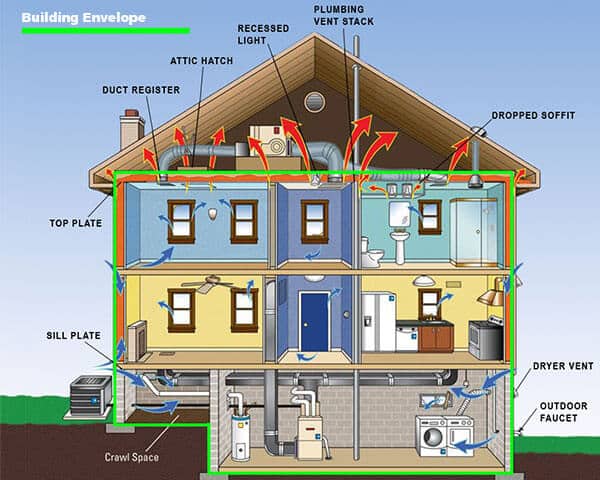
A homes’ “building envelope” generally includes its roof, sub floor, exterior doors, windows and of course the exterior walls. Imagine a cardboard box holding many items or components. The cardboard box would be considered the envelope.
Basically, the envelope is the physical separator between the conditioned and unconditioned exterior environment of a building. It is the physical components of a home that manages or is resistant to air, water, heat, light, and noise transfer.
Part of a home’s “Building envelop” is the exterior walls and cladding
The building codes basically requires that a homes’ exterior wall envelope shall be designed and constructed in a manner that prevents the accumulation of water within the wall assembly by providing a water-resistant barrier behind the exterior cladding, as well as a pathway for water to escape to the exterior when necessary. For a house, the term “exterior cladding” generally means the outer skin, layer or siding; examples of common claddings would include stucco, brick, stone, vinyl siding, wood siding, and fiber cement claddings like Hardiplank or Hardiboard.
The building codes and weep screed requirements
Historically the concept of a weep screed first came about by a few architects and the Federal Housing Administration (FHA) in 1965 and was first known as FHA screed. By the 1970’ s various building codes and building jurisdictions started establishing additional requirements for the installation and use of stucco weep screed. Over the years the guidelines have become more complex and rigid.
The IRC, International Residential Code, and the IBC codes have weep screed requirements
The IRC, International Residential Code, and the IBC, International Building Code, have weep screed requirements in them.
Having a clearance under the weep screed is desirable for best performance and is required by most building codes. Codes vary from jurisdiction to jurisdiction and year to year; however, the following requirements are common.
The code requires a minimum of 2 inches of clearance to paved areas and hardscape, like concrete, pavers, etc. and a minimum of 4 inches to the dirt, gravel or the soil level. Note that if the stucco cladding is not a traditional hard coat wall but an FFIS synthetic stucco wall assembly, then a 6-inch clearance, rather than a 4-inch clearance to the dirt / earth may be required. There are a number of inspectors or contractors, who feel that if you only have a couple of inches, that you may meet the spirit of the code, but not necessarily the letter of the code.
Additionally, the weep screeds vertical attachment flange must be a minimum 3-1/2 inch and be placed at or below the foundation plate of the exterior stud wall.
The weep screed material is generally corrosion-resistant 26 gauge galvanized sheet metal, but it may be made of aluminum, stainless steel or of certain approved plastics. Note that there are other types of weep screeds, i.e. Mid-Wall Weep Screed, however, the majority of homes do not have this type.
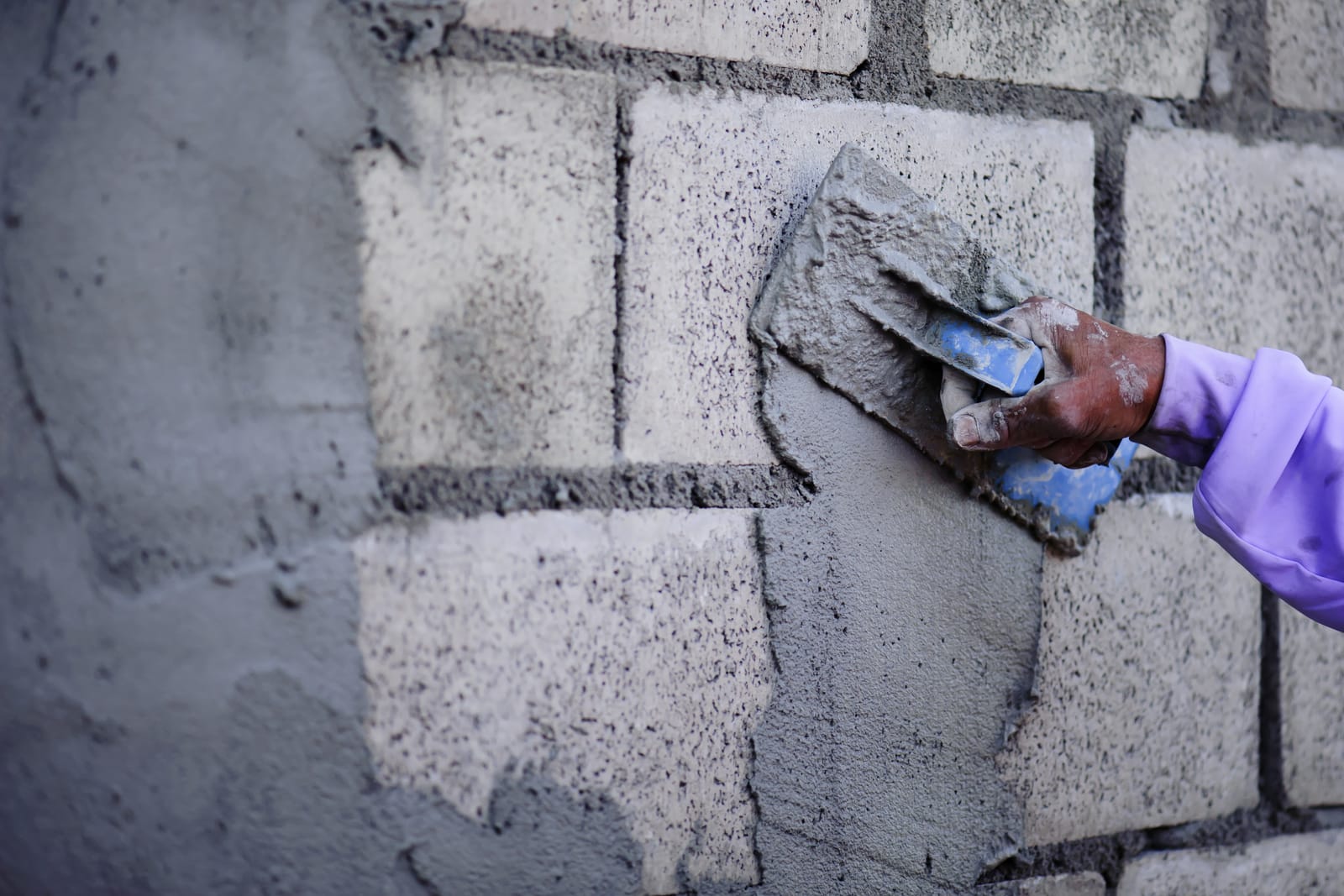
Exception
Usually, the code has an exception to the requirement of a weep screed if the stucco exterior cladding is over a concrete or masonry wall that is designed properly and has appropriate flashing.
Note that stucco applied over a concrete or masonry wall may experience wicking, as well as blistering and flaking if the stucco continues down the stucco wall into soil with no break.
Should you caulk or paint your weep screed?
The majority of weep screed flashings have a angled or “V” shaped bottom area. An EFIS synthetic stucco system or a “One Coat stucco system often has a weep screed that is flat on the bottom. When the stucco is first applied on a stucco wall and cures, the stucco shrinks slightly as it hardens. On a “Traditional hard coat stucco wall, the weep screed is usually the “V” shaped design and leaves a thin, hairline type gap between the harden stucco and the metal flashing. It is through this thin gap that most of the trapped moisture in the wall weeps out and if blocked, then water often builds up in the wall and causes damage. Note that moisture may also exit through any holes in the stucco weep screed.
Caution. Many stucco contractors also advise against painting the weep screed, especially the seam where the metal and the stucco meet, for painting it may prevent moisture from escaping from the wall. Homeowners often face a decision as whether to paint the weep screed if it is rusting as a maintenance precaution, but worry that if they do, the paint may result in the weep screed being blocked or not draining properly. Consulting with a local qualified stucco professional might be wise, for he could advise you on what is best for your geographic area and climate zone.

If you have blocked stucco weep screed or no weep screed, one of the most important things a homeowner should do is to stop or greatly reduce moisture from getting into the wall and behind the stucco as soon as possible. Doing so will help to reduce or prevent any additional damage. Review the various ways moisture can penetrate the stucco or access the wall cavity. Just a few of the ways moisture gets into a wall is:
- Cracks in the stucco
- Sprinkles wetting the stucco wall
- Improper planters allowing water into a wall
- Missing, damaged or improper flashing
- Gaps or unsealed areas around doors and windows
- Penetrations in the stucco wall for plumbing pipes or electrical conduits
- Gaps or unsealed areas at exterior light fixtures
These are just a few ways that moisture penetrates a wall or accesses the wall cavity. Remember to do an annual check-up and review of your stucco and if you have EFIS synthetic stucco be extra vigilant.
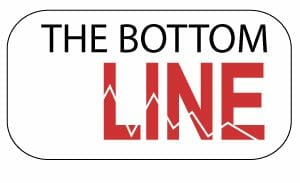
- For a home to have blocked weep screed, improperly installed weep screed or no weep screed is not uncommon.
- Catching stucco problems early and correcting them can save significant money in the long run.
- Mold and mildew can damage a homes’ framing, insulation, as well as cause personal health issues.
- The code has changed over the years and so some older homes are less likely to have weep screed or effective drainage for moisture in a wall.
- Doing a yearly check of your stucco and keeping your stucco well maintained is wise.
- Structural issues will occasionally occur if moisture gets into your walls and causes wood rot and deterioration.

